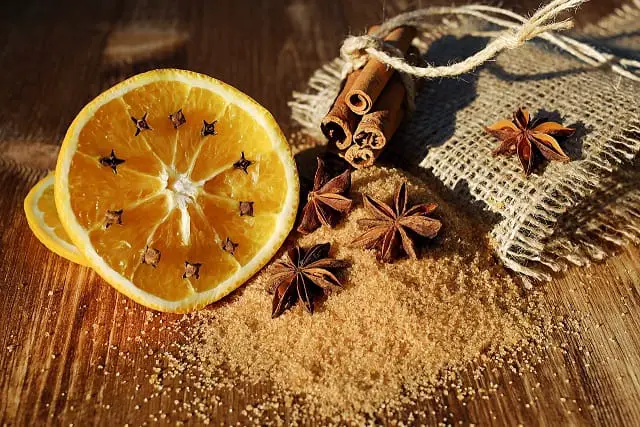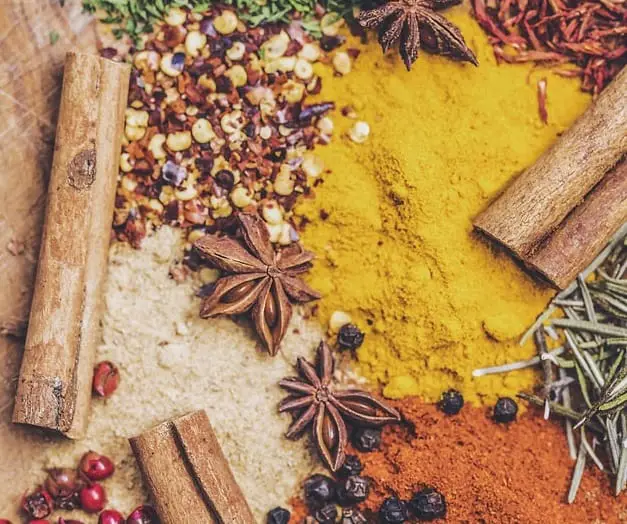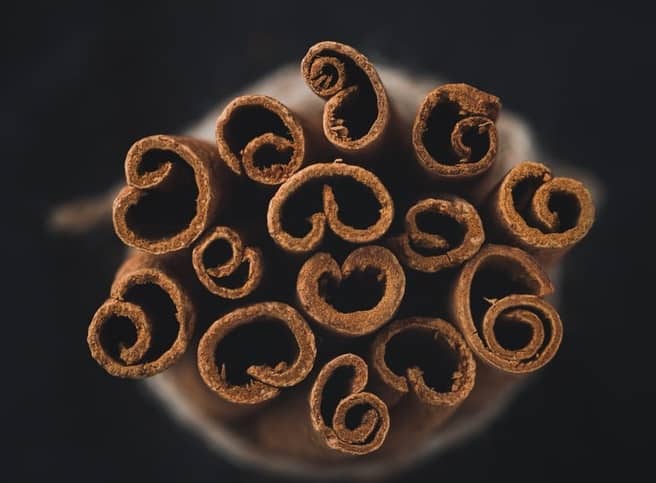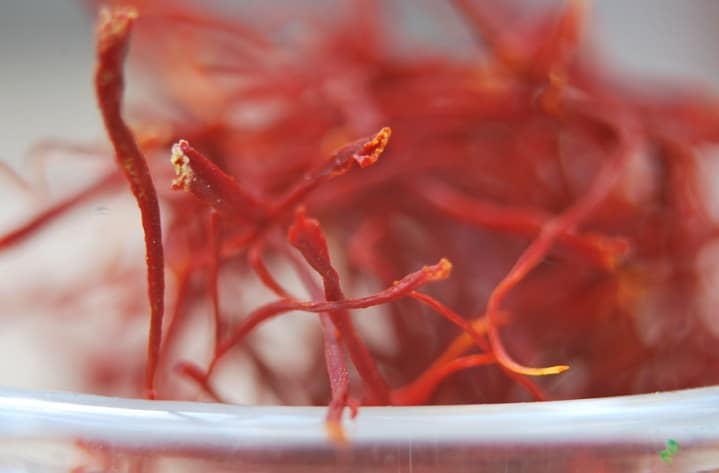
You can spice beer at any time of the year, but it seems like the holidays really love to pull out all the stops. Holiday beers use mulling spices to not only flavor beer but also help to warm the body in a cold winter.
Typically mulling spices are used in hot beverages during the autumn and winter. But, they can also be used to brew beer. Typical mulling spice mixes for beer include: Cinnamon, clove, allspice, and Nutmeg. However, holiday beer spices are not limited to just these spices.
Spices are also becoming more common throughout the year, and interesting combinations such as jalapenos in beer seem to be on the rise.
But. As with all exciting things its important to maintain a balance.
Below my blurb on maintaining balance with spices and beer, I’ve compiled a list of various spices used in the production of beer. They range from rare to more common. Click here if you want to jump straight to the beginning of the list.
Maintain Balance in Beer with Spices
I think we have all experienced that moment where we have had a sip of beer and thought, that tastes pretty good but, I probably couldn’t get through a whole pint of that.
Spiced beer should leave the beer drinker wanting an entire pint. It should be balanced and not overwhelming. The best way to maintain balance is to experiment by adding minimal amounts of spice in secondary, separated between a few vessels.
When it comes to spice balance, less is most likely more. In fact you should always leave the beer drinker wondering, what is that delicious flavor?

Whether that be from a perfect mixture of delicious spices, or adding in just enough to change the flavor, but not overcome the hops and malt.
In fact from the book Brew Like A Monk my favorite quote is:
If a drinker can name the spices, it’s a sign they are overdone.
Stan Hieronymus, Brew Like A Monk.
So naturally you want to either hide the spice flavor, or even create your own flavor from a mixture of spices. Better yet use some lesser known spices for a rare flavor.
When to Add Spices
Part of the art of adding spices is at what point they should be added. Should it be during the boil, or secondary fermentation?
Typically the safest way is to add spice during the boil, that way you don’t risk an infection. And for smaller beers that may be your best bet.
Spices during the Boil

In most Belgian beer recipe’s the spice addition of coriander and orange peel is typically added at the end of the boil. This may be for a few reasons.
- It could help bitter an otherwise sweet beer, since boiling orange peel or even coriander could result in process much like the one that takes place with hops.
- It helps to impart the flavor but much of the aroma is lost. The fruit aroma from the yeast is much more desired than spice.
Spices in Secondary
Adding spices to secondary has many advantages as well. Since its post fermentation you can split your spice between multiple containers and test out spices with the same beer batches.
It also allows more of the aroma to linger, but again, if you can identify the spice, you may have gone too far.
Note: When adding spices to secondary its best to soak it in a solution of vodka that is relatively tasteless before dumping into the fermentor. An alternative is to boil it.
Soaking a spice in alcohol is called a tincture for future reference.
How Much Spice to Add
As a general rule don’t add a lot. If you are adding one spice, then add one maybe two whole pieces, or as little as half a teaspoon. But it depends on the potency of the spice you are using.
If you are mixing spices together it may be best to add just a teaspoon at the very most. But feel free to experiment in secondary, and amp it up as you see fit.
Playing with Flavor and Spice to Save Money
Here is an interesting thought.
Spices might actually save you money!
Lets say there is a popular hop flavor profile that just is way to expensive for your budget. You can actually get the same flavor profile with just a few spice blends.

Or better yet say you want to save money, but still get that chocolaty punch in a beer. Maybe adding cocoa nibs, while maybe more expensive will push the flavor to where you want it with way less chocolate malt.
The possibilities with spices are endless and this may be the difference between a successful brewery monetarily, and one that tries to follow the trend and can’t even break even.
Don’t Forget the Yeast
When brewing with spice, if you really want to make sure your spice stands out or melds well with the overall beer profile you need to take into account the yeast.
Yeast can impart specific flavor profiles to beer so its important to consult the yeast flavors before just adding a spice to your beer. In fact, yeast can sometimes achieve the flavor you want from spice without even adding the spice.
If you do want to get the most mileage from your spice you might also think about adding a very neutral yeast.
Alot of English and Irish yeasts are mellow in order to let the maltiness of the beer shine.
If you are interested in reading more about English and Irish yeasts and stouts in general check out my oatmeal stout tips article.
Now that we know more about using spices. Let’s take a look at some of the most popular spices that you can add to beer and what you can expect from them.
Note: Suggested Beer Styles are by no means the only styles you can use, feel free to experiment to your hearts content. As is the nature of any homebrewer!
Cinnamon can Spice up any Beer

You won’t need more that a couple (2) cinnamon sticks in a 5 gallon brew, to impart the flavor into your beer. You could grind it up or throw it into secondary in its whole form.
Cinnamon can be a powerful flavor so make sure to pick a beer type that will not be overpowered by the cinnamon. Some darker more caramel forward beers are a good choice.
There is an interesting beer that uses cinnamon and that’s the Blue Moon Horchata Ale. Its very cinnamon forward though and is balanced by the Horchata.
Suggested Beer Styles: Brown Ale, Amber Ale.
Clove a Common Flavor in German Yeast
German yeast actually imparts a banana and clove flavor which makes it very interesting that you should want to add actual clove to beer.
Nonetheless there are times where you don’t want a banana flavor or just want to use a yeast that doesn’t impart a clove flavor for one reason or another.
So why not just use actual clove. Mind you don’t add too much clove, maybe just 1 maybe 2 either at the end of the boil or in secondary.
The clove flavor adds a sweet and warm flavor.
Suggested Beer Styles: Wheat Beer, Porter, Brown Ale.
Allspice the Jack of ALL Spices
Allspice is sort of a catch all if you don’t mind having the flavor of cinnamon, clove, nutmeg and pepper all in one go.
It might even be the perfect pumpkin beer blend if it weren’t for that darn peppery taste.
Suggested Beer Styles: Brown Ale, Amber Ale, Stout.
Orange Zest a Belgian Classic
I wouldn’t exactly call Orange zest a mulling spice, but in the end any warm drink could probably work with a nice orange flavored zest.
Therefore we shall add it to beer!
It’s actually not uncommon to add orange zest to beer, and even summer brews at that. Its normally used for wheat style beers with some spicy Belgians running in a close second.
Orange zest by itself wont make for a nice winter beer, but mixing it with say any of the all spice blends will make for a very exciting citrus, spiced brew.
Suggested Beer Styles: Wheat beer, pale ale, IPA.
Star Anise for the Exotic Brewer
This is an acquired taste, if not downright unpleasurable for some. My dad for one hates the flavor, since of course he hates black licorice.
But, if you want something a bit exotic, since it originally hailed from China you could try some star anise in your next brew.
Check out my article on brewing with rice to gain a better understanding of Asia’s impact on beer.
And to be honest, I don’t really have an overwhelming licorice taste when my wife uses it in her cooking. Star anise does pair pretty well with the likes of chocolate and cinnamon.
Make sure to just use one, and you likely want to pair it with something else rather than on its own, unless of course, you’re brewing a stout.
Suggested Beer Styles: Stout, IPA, Brown Ale, Porter.
Dried Ginger Spicy Sweet
I absolutely cannot get enough of ginger. So you are damn sure I’m adding it to my beer.
You can get a lot of runway out of ginger. You see if you brew a cool summer ale with it you end up with a spicy-sweet refreshing brew.
But then you can hold on to the rest of your beer and let it age into the winter. At this point some of that sweetness goes away and turns into more spice.
I would suggest not adding this to the boil since you might lose some of the sweetness.
Suggested Beer Styles: Ginger beer? It seems to be a style all on its own.
Cardamom Seed Possible Hop Replacement
The cardamom seed makes for a perfect spicy, citrus and lemony taste. It does have some interesting aromatics to it though.
Whats interesting is you can get much of the flavor of a cardamom seed from specific flavors of hops. While not entirely the same it could be an interesting substitute for some IPAs.
If you are going for a winter beer I would add cardamom seed to any of the base winter spices, like nutmeg, cinnamon, and clove.
Suggested Beer Styles: IPA, Belgian, Porter, Stout, Red Ale.
Nutmeg a Powerful Spice
Nutmeg is strong so its best to use it very sparingly. Its an intense spice with a very noticeable aroma. It goes well with beers that have a nutty flavor, think nut brown.
Nutmeg is one ingredient that makes up the spice known as pumpkin spice. This spice is the quintessential fall flavor and will make all the Ug boot millennial girls come running.
Suggested Beer Styles: Stout, Porter, English ale, pumpkin ale.
Rosemary for that Christmas Tree Flavor
My uncle actually brews a pretty good Christmas ale. Its interesting because he makes it taste a bit like a Christmas tree, you know that piney flavor and smell.
He might be using rosemary to achieve this although it could be a mixture. He hasn’t told me.

Use about one sprig of this, steep this like you would with a hop basket. I would not leave this in the beer.
If the flavor of rosemary just is not enough for you then add it to secondary for a bit and see what happens.
Suggested Beer Styles: Saison, Stout, Red Ale.
Cocoa Nibs a Chocolaty Goodness
Cocoa Nibs don’t have to be only for Winter and Fall. But it is commonly associated with cool weather flavors.
Typically Cocoa nibs are most commonly used in stouts and darker beers to play on the chocolate flavor imparted by the roasted grains.
I have known to hear of lighter beers using vanilla and cocoa nibs on occasion.
Suggested Beer Styles: Anything dark. Possibly golden ale.
Caraway for the Rye Beer Lover
Earthy and a bit of licorice or citrus flavor, its certainly unique but how is it in beer?
The dominant flavor in rye bread is caraway so it might be interesting to add this to a bready beer using rye as a grain base.
Suggested Beer Styles: Rye beer.
Lemongrass a Holiday at the Equator
This is an interesting one. Lemongrass is gaining steam as many Asian cuisine tends to use it. As Americans start to use it more its finding its way into many beer styles.
Its not exactly a holiday style flavor, but I guess it really just depends on if you spend your Christmas at the equator or not.
Use a stalk of lemongrass and let it sit in secondary. Chop it up to impart more flavor. You can really get the aroma out of this one and have a nice light citrusy and refreshing beer.
Suggested Beer Styles: Wheat beer, Blonde Ale, Saison.
Vanilla a Companion to Cocoa
What could be better than chocolate, I would say adding vanilla to it!
The problem with vanilla is that its extremely rare and expensive. So getting the real thing can be a costly endeavor.
But, that makes it a great addition for homebrewers.
Since many commercial brewers wont use the real stuff but instead will opt for fake extracts.
You can either buy the whole beans and extract the vanilla interior or purchase extract that is real vanilla, rather than the fake stuff.
Try adding this to darker more chocolaty type beers, but I have heard of some successes with lighter beers like a NEIPA.
Its best to add vanilla to secondary by creating a tincture.
If you are curious about what a NEIPA is check out my article on how to make a New England IPA.
Suggested Beer Styles: Porter, NEIPA, IPA, Stout.
Thyme for Something Hoppy
The best way to add thyme to beer is during the boil. It really compliments hops too.
This is a great spice to experiment with when it comes to brewing hoppy style beers.
Sometimes it can even work well with fruits, so feel free to fruit and hop that beer to your hearts content.
Suggested Beer Styles: IPA, Pale Ale.
Saffron Dreams of Honey

The second most expensive spice on the planet. Behind vanilla.
Again you would brew with this purely for its rarity. Not many large breweries can afford to mass produce this type of beer.
What saffron does to beer is very subtle, so it stands to reason you should not add it to an overly robust beer style. It has been likened to a floral honey flavor.
The most common way to add it to beer is the concoction of a tea like solution.
It may even do well when added to a braggot. Check out my article on brewing honey beer.
Suggested Beer Styles: Braggot, anything with a lighter flavor.
Turmeric and Ginger can be Friends
Turmeric and ginger pair well together, but turmeric can add a spicy earthy flavor to any beer as well.
Turmeric has very little information on its use online, but it has found its way into a decent number of beers.
Most notably turmeric makes a nice addition to a Belgian tripel. The spicy yet earthy flavor can really make for a unique yet familiar Belgian style beer.
If you are interested in brewing a Belgian tripel, learn how to make one from my crafting a Belgian tripel recipe article. This helps you create a base, then just add a bit of turmeric and see what happens.
Suggested Beer Styles: Belgian Ale, Stout.
Fennel a less Intense Anise
When it comes to using fennel its important to put it into the end of the boil. You don’t want to add it to secondary unless you want it to taste more like anise.
But, if that’s what you are going for you can get that more intense anise flavor in secondary.
When added to the boil you will get a more delicate flavor. Which can work better with lighter beers.
Suggested Beer Styles: Brown ale, blonde ale, wheat beer, amber ale, rye ale.
Spruce the Christmas Tree Competitor

Earlier I mentioned that rosemary would be a good spice addition to make something taste more like the holidays.
But, why not just add an actual Christmas tree!
While not the only tree used for the traditional Christmas trees its delicious piney flavor will be imparted into your next beer.
If you are more interested in using spruce, I found the best article in all of the internet. Check out this article from kegerator.
Suggested Beer Styles: IPA, Pale ale, saison, pilsner, stouts, amber ale.
Jalapeno the Bringer of Tears
My local microbrewery used Jalepeno in one of their beers and it was hard to swallow.
But, it didn’t matter if you swallowed it or not the heat was there, it was friggin’ spicy.
That’s not to say it was not delicious though because it was. And that’s the problem. I cried as I drank the whole thing with a smile on my face.
Suggested Beer Styles: Cream ale, Mexican beer, Blonde ale.
Fenugreek Seeds Barrel Age on the Cheap
Nothing is better during the winter months than a warm maple flavored beverage.
Fenugreek seed can help you get just that, without having to waste time and money on barrel aging a beer.
It’s also cheaper than its extract counterpart. So save money and get that delicious flavor all in one.
Suggested Beer Styles: Great for adding to stouts, porters and Belgian beer.
Juniper Berries
Juniper berries can impart bitterness to beer, which may be a good alternative if you are allergic to hops.
It also imparts a subtle sweetness that works well to, if you were to add it to secondary.
Sahti is a famous Finnish style beer which has a banana like finish. The juniper berries help to balance that sweetness.
Sahti is currently undergoing a resurgence thanks to its use at historical festivals. Much like many meadaries.
Juniper berries are not exclusive to the Sahti style and many brewers have begun to experiment with them.
Suggested Beer Styles: Sahti, pale ale.
Should You Use Spices in Your Next Brew?
I admit I went a bit crazy with the number of spices on the list, but there are just so many!
Not all of these spices are traditionally used as mulling spices in beer, but most if not all can be used to warm the body on a cold winters night.
At the very least you can impart delicious flavor combinations into your homebrew making it a unique experience for any of your friends.
